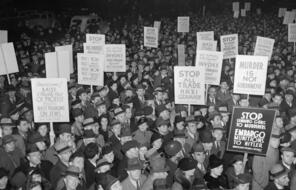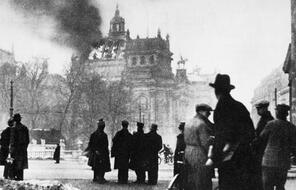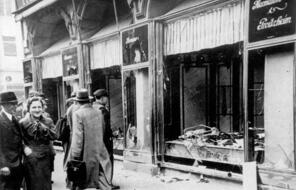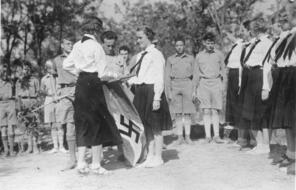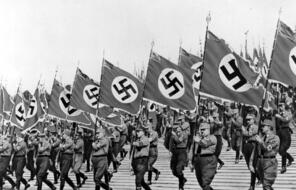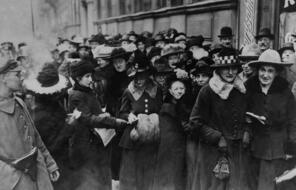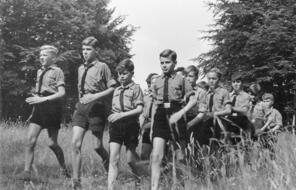1914: War or Peace?
Subject
- History
Language
English — USUpdated
Frantic competition among European powers marked the late nineteenth and early twentieth centuries. The strength of a nation was measured by the scope of its wealth and resources, the amount of land it held, and the size of its army and navy. The leaders of many countries believed that a nation could only achieve its political and economic goals if it had a strong military, a belief known as militarism. Conscript armies grew in most countries, in which young men were required to undergo a year or two of military training and were then sent home as reserves to be mobilized or called to action when needed for fighting. Naval budgets increased every year, especially in Britain and Germany. No country wanted to be without allies if war broke out, so two major military alliances took hold. Germany, fearful of being hemmed in by enemies on its east and west, signed an agreement with Austria-Hungary to support each other in a European war. Russia and France reached a similar agreement.
Boy Scouts Founder
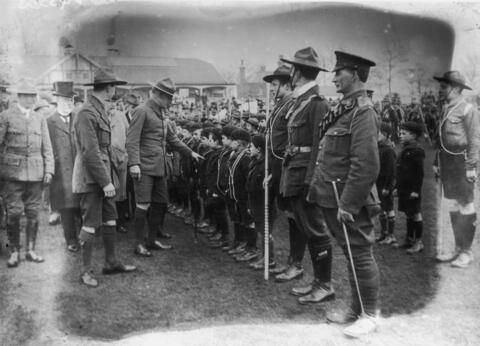
Boy Scouts Founder
Lord Robert Baden-Powell, founder of the Boy Scout movement, inspects scouts in Britain in 1915.
Militarists increasingly viewed their nations’ armed forces as above criticism. And many greatly admired such military values as self-sacrifice, discipline, and obedience. War was increasingly seen as an adventure, an opportunity to fight and even die for one’s country. Karl Pearson, a British writer at the time, claimed that wars are necessary. He maintained that nations could establish their rightful position in the world “by contest, chiefly by way of war with inferior races, and with equal races by the struggle for trade routes and for the sources of raw materials and food supply.” 1
Others held similar views. Count Theobald von Bethmann Hollweg, the chancellor of Germany at the turn of the twentieth century, claimed that “the old saying still holds good that the weak will be the prey of the strong. When a people will not or cannot continue to spend enough on armaments to be able to make its way in the world, then it falls back into the second rank.” 2
Militarism shaped the way people used words like patriot and hero. Patriots were no longer defined only by a love of country but also by an eagerness to fight for that country. The word hero was reserved for military men who excelled in battle. Historian Margaret MacMillan notes, “In Britain small children wore sailor suits and on the Continent schoolchildren frequently wore little uniforms; secondary schools and universities had cadet corps; and heads of state—except in republican France—normally dressed in military uniform.” 3
Throughout Europe and the Americas, many children, particularly boys, now belonged to youth groups that stressed physical fitness, military discipline, and, above all, an avid nationalism. One of the most popular of these groups was the Boy Scouts. Its founder, Lieutenant General Robert Baden-Powell, hoped it would transform British boys and young men from “pale narrow-chested, hunched up, miserable specimens, smoking endless cigarettes” into strong and healthy patriots. 4 Within a year of its founding in 1908, the Boy Scouts had more than 60,000 members in England. From there the movement spread to other parts of the British Empire and to English-speaking nations like the United States. In 1911, a similar group in Germany taught boys “that service to the Fatherland is the highest honor of the German man.” 5
Possessing colonies outside of Europe was another way for countries to demonstrate power. Encouraged by widespread ideas of imperialism, competition to gain colonies continued in the first decade of the twentieth century. Conflicts often arose, but they were settled through diplomatic means. These diplomatic agreements did not recognize any rights of inhabitants of these areas, who were generally considered inferior and unable to take care of themselves. As the second decade of the century began, several conflicts also erupted between the small countries of the Balkan Peninsula. Each crisis was settled through negotiation, but with each new crisis, more Europeans believed that negotiation would someday fail and war would eventually result.
Still, there were many who both feared and opposed war. Among the strongest opponents of war was Jean Jaurès, the leader of the French Socialist Party. He repeatedly argued that to work for peace was to engage in “the most heroic of battles.” 6 He asked:
What will the future be like, when the billions now thrown away in preparation for war are spent on useful things to increase the well-being of people, on the construction of decent houses for workers, on improving transportation, on reclaiming the land? The fever of imperialism has become a sickness. It is the disease of a badly run society which does not know how to use its energies at home. 7
Jaurès was a pacifist—literally, one who favors peace. The term was coined at a Universal Peace Congress in 1901 and it quickly caught on. One of the most outspoken pacifists of the time was an Austrian countess, Bertha von Suttner. This was a time when most women did not speak publicly about their political views, but, ignoring that expectation, the countess set out to change the way people viewed war.
In the late 1800s, Suttner had written a book that vividly described what she considered the “true horrors of war.” The novel, Die Waffen nieder! (Lay Down Your Arms), was reprinted many times and was translated into a dozen languages. It was not the only tool the countess used to promote peace. She founded anti-war societies in Austria and Germany and inspired similar groups in other countries. Her efforts aroused others, including Alfred Nobel, a Swedish arms manufacturer and the inventor of dynamite. He created a special award for peace activists at the countess’s request. Known as the Nobel Peace Prize and first awarded in 1901, it was established to honor those who try to end war or prevent it.
In 1899, the countess persuaded Tsar Nicholas II of Russia to host an international conference to promote peaceful alternatives to war, particularly arbitration—the use of a neutral third party to resolve international disputes. As a woman, the countess was not allowed to take part in the meeting, but she worked behind the scenes to establish the Permanent Court of Arbitration (popularly known as the Hague Tribunal).
In 1905, Bertha von Suttner was awarded the Nobel Prize for Peace in recognition of her work in promoting arbitration. Yet despite awards like the Nobel Prize and the increasing popularity of anti-war literature, most people found the idea of “fighting for our nation’s honor” far more appealing than seemingly endless rounds of arbitration. Increasingly, pacifists were isolated and demonized.
Connection Questions
- In what ways did Europeans in the early 1900s believe that countries could demonstrate that they were strong and powerful? What were different ways that individuals thought they could show loyalty to their country? Why might fighting in a war be appealing?
- What conditions in the early 1900s made war appear likely?
- What is militarism? What is pacifism? Why were efforts to promote pacifism over militarism unsuccessful?
- How are the words hero and patriotism used today? When you hear these words, what comes to mind? Can someone be a patriot and a pacifist?
- What was the “fever of imperialism” to which Jaurès referred? How might a country’s desire to gain imperialist power influence its policies at home?
- 1Karl Pearson, National Life from the Standpoint of Science (London: Adam and Charles Black, 1905), 46.
- 2“Notes and Comments,” Oriental Review 1, no. 15 (June 10, 1911): 279.
- 3Margaret MacMillan, The War that Ended Peace: The Road to 1919 (New York: Random House, 2014), 275.
- 4Zara Steiner and Keith Neilson, Britain and the Origins of the First World War (London: Palgrave Macmillan, 2003), 169.
- 5Derek S. Linton, “Preparing German Youth for War,” in Anticipating Total War: The German and American Experiences, 1871–1914, ed. Manfred F. Boemeke, Roger Chickering, and Stig Förster (Cambridge: Cambridge University Press, 2006), 177–78.
- 6Quoted in Frederick Brown, The Embrace of Unreason: France, 1914–1940 (New York: Knopf, 2014), 13.
- 7“Voices of the Great War,” The Great War and the Shaping of the 20th Century, WGBH website, accessed April 4, 2016.
How to Cite This Reading
Facing History & Ourselves, “1914: War or Peace?”, last updated August 2, 2016.

